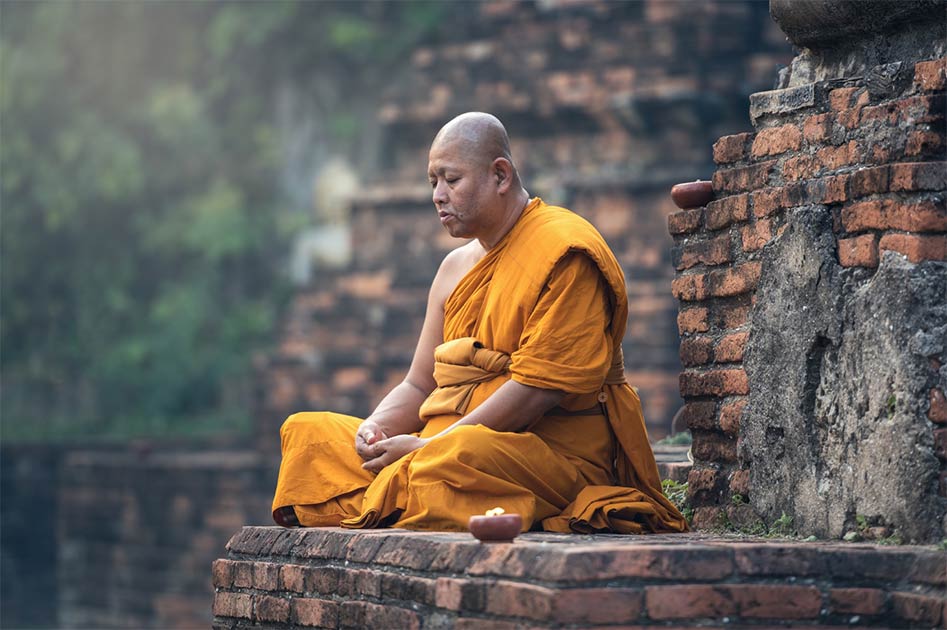The Ancient Temples and Tolerance of Ramateertham Village, India
India is blessed with an abundance of ancient historic and religious sites, but the small village of Ramateertham is unique. Nestled in its hills are sites that are sacred to Buddhists, Jains, and Hindus. This area has been a sacred landscape since ancient times and as a result, a rich heritage of archaeological sites remains. Ramateertham has been an area of pilgrimage for over two millennia and possibly even longer. Today, it is increasingly popular with tourists.
The Rich History of Ramateertham in India
Although Ramateertham has traditionally been associated with the god Rama, one of the major Hindu deities, this locality was once part of the Mauryan Empire and Buddhism became popular in the area at the time. It likely flourished because of the patronage of emperors such as Ashoka the Great (304 to 232 BC) who promoted the spread of Buddhism throughout Asia. The Buddhists built a large monastery complex in the locality.

1000-year-old Sri Rama temple on top of Bodhikonda. (CC BY-SA 3.0)
Hindu kingdoms emerged in the area after the fall of the Mauryans in 185 BC, but they continued to patronize the Buddhist and Jain monuments in the area. This was typical of the tolerance and religious pluralism of the time, with mutual respect between the Buddhists, Jains, and Hindus.
The Buddhist monastery was abandoned in the Middle Ages, likely because of a revival of Hinduism in India. It may also have been deserted as a result of the constant Muslim raids after the 11 th century AD.
Today, the Buddhist and Jain sites are no longer in use as these communities have virtually disappeared from the area. Hindus continue to make pilgrimages to the ancient temple dedicated to Rama and the new temple dedicated to Shiva which was built in 2007. It is only in recent years that a systematic archaeological review of the area has been conducted and many important objects have been unearthed.

Gurabaktakonda Buddhist Monastery remains at Ramateertham, India (CC BY-SA 3.0)
The Many Wonders of Ramateertham
The village of Ramateertham is set in hilly country and there are numerous historic ruins in these basalt hills. The Rama Temple, which dates back centuries and is based on a classical Indian design, is situated nearby. There are several important idols and statues in the temple, which is often busy with tourists and followers.
The southern hill known as Bodhikonda has Buddhist, Hindu and Jain remains. The caves contain historic ruins and examples of rock art from various religious traditions. On the south-west of the hill stand the ruins of the Jain temple. Also, on the Bodhikonda hill, is the 1000-year-old temple dedicated to Rama. The square shaped building is topped with a Shikhara, a pyramid-like structure that covers the central shrine of the temple. This brick structure was adorned with reliefs and sculptures.
- Farmer Discovers Ancient Jain Statue Whilst Plowing in Southern India
- Kailasa Temple: How Was This Massive Hindu Temple Carved out of a Single Rock?
- A 2,500-year-old Site Blessed by Buddha - Kelaniya Raja Maha Vihara

A view of ruined Jain temple on Bodhikonda, India (CC BY-SA 3.0)
The northern hill called Ghanikonda (also known as Durgakonda) has a temple dedicated to the Hindu goddess Durga. There are various mounds on this hill that were built by Jains and Buddhists in the past.
The most impressive remains are on the central hill known as the Gurabaktakonda and it is on the north side of this that the Buddhist monastery stands. At the summit on the south side is the perennial spring, where a brick mound is decorated with Jain images.
All that remains of the Buddhist monastery are foundations and walls and it is estimated to have been 180 feet (60m) in length. Near the temple is a remarkable water reservoir that was constructed on the hill to supply the needs of the Buddhist monks. Also, to be seen is a stupa and a chaitya, or shrine, and not far away are the remains of several other shrines and a stone platform.
A Journey to the Temples of Ramateertham
The historic area is in Vizianagaram, in the state of Andhra Pradesh. Public transport to the area is available and it is possible to visit the Sri Rama Temple and the ruins. They are located high up the hill and can be difficult to access, depending on the weather conditions. There is no fee charged, but visitors need to act appropriately and respect the cultural and religious sensitivities of the local people.
Top image: Buddhist monk meditation in temple Source: Sasint / Adobe Stock
By Ed Whelan
References
Babb, L. A. (2015). Understanding Jainism. Dunedin Academic Press Ltd < https://books.google.ie/books?hl=en&lr=&id=6VtwDwAAQBAJ&oi=fnd&pg=PT3&dq=jainism+shrine&ots=q0iRrl3S3R&sig=4d8rqKqdpdv5T3DHSHIW6_1BgkI&redir_esc=y#v=onepage&q=jainism%20shrine&f=false>
Schopen, G. (1997). Bones, stones, and Buddhist monks: collected papers on the archaeology, epigraphy, and texts of monastic Buddhism in India (Vol. 2). University of Hawaii Press < https://books.google.ie/books?hl=en&lr=&id=rxdZ-BVNm_IC&oi=fnd&pg=PR9&dq=buddhism+india+&ots=TrXvhY4PKZ&sig=OVkKQV_A8GIgt2XbO1xl8FSM24Q&redir_esc=y#v=onepage&q=buddhism%20india&f=false>
Suryanarayana, M. (1980, January). Archaeological remains in Madhya Kalinga. In Proceedings of the Indian History Congress (Vol. 41, pp. 974-978). Indian History Congress < https://www.jstor.org/stable/44141931?seq=1>



















